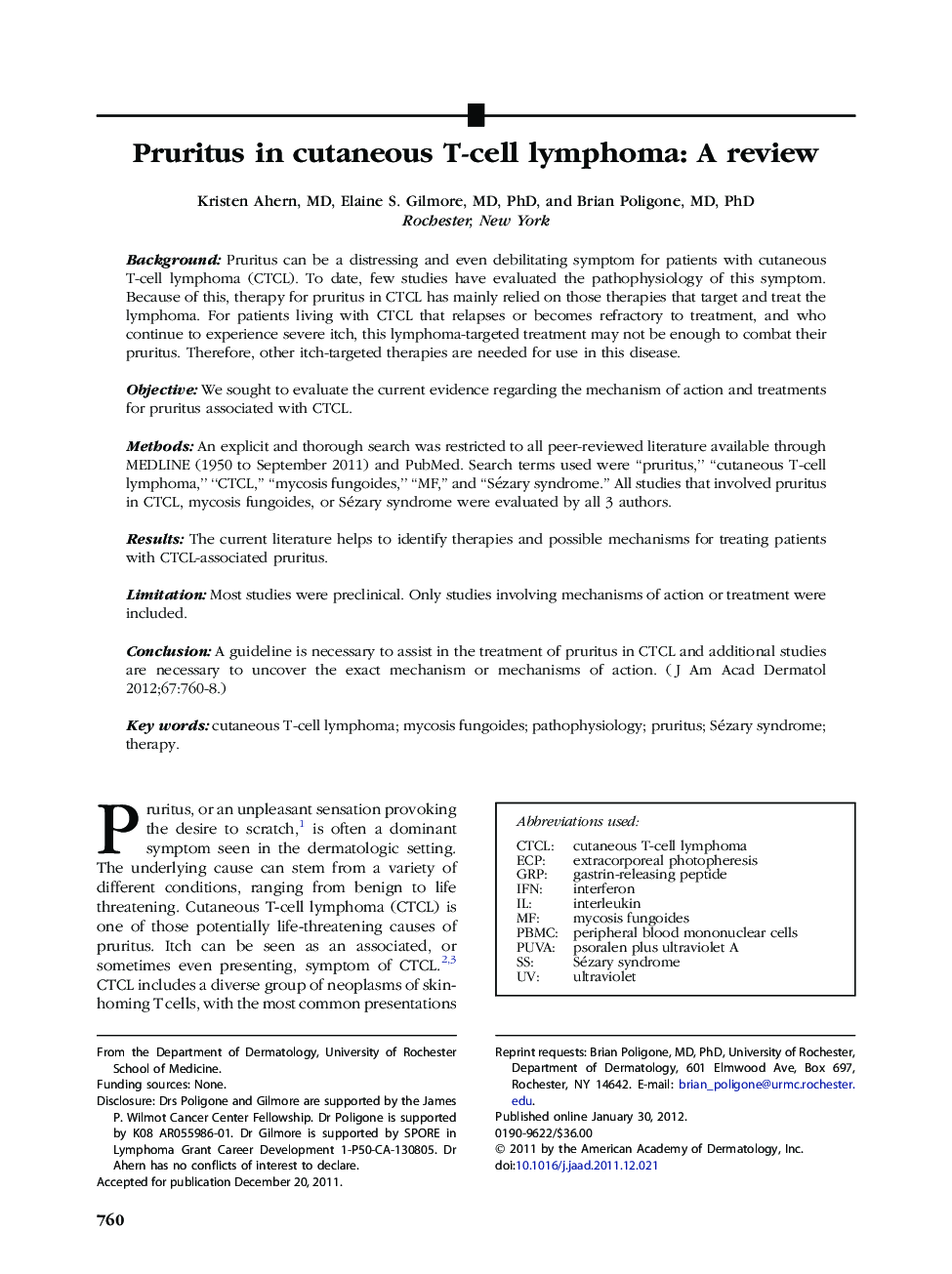| Article ID | Journal | Published Year | Pages | File Type |
|---|---|---|---|---|
| 3206230 | Journal of the American Academy of Dermatology | 2012 | 9 Pages |
BackgroundPruritus can be a distressing and even debilitating symptom for patients with cutaneous T-cell lymphoma (CTCL). To date, few studies have evaluated the pathophysiology of this symptom. Because of this, therapy for pruritus in CTCL has mainly relied on those therapies that target and treat the lymphoma. For patients living with CTCL that relapses or becomes refractory to treatment, and who continue to experience severe itch, this lymphoma-targeted treatment may not be enough to combat their pruritus. Therefore, other itch-targeted therapies are needed for use in this disease.ObjectiveWe sought to evaluate the current evidence regarding the mechanism of action and treatments for pruritus associated with CTCL.MethodsAn explicit and thorough search was restricted to all peer-reviewed literature available through MEDLINE (1950 to September 2011) and PubMed. Search terms used were “pruritus,” “cutaneous T-cell lymphoma,” “CTCL,” “mycosis fungoides,” “MF,” and “Sézary syndrome.” All studies that involved pruritus in CTCL, mycosis fungoides, or Sézary syndrome were evaluated by all 3 authors.ResultsThe current literature helps to identify therapies and possible mechanisms for treating patients with CTCL-associated pruritus.LimitationMost studies were preclinical. Only studies involving mechanisms of action or treatment were included.ConclusionA guideline is necessary to assist in the treatment of pruritus in CTCL and additional studies are necessary to uncover the exact mechanism or mechanisms of action.
